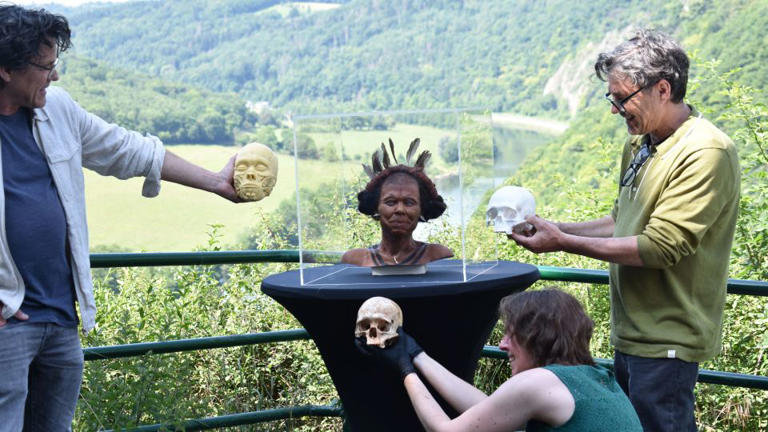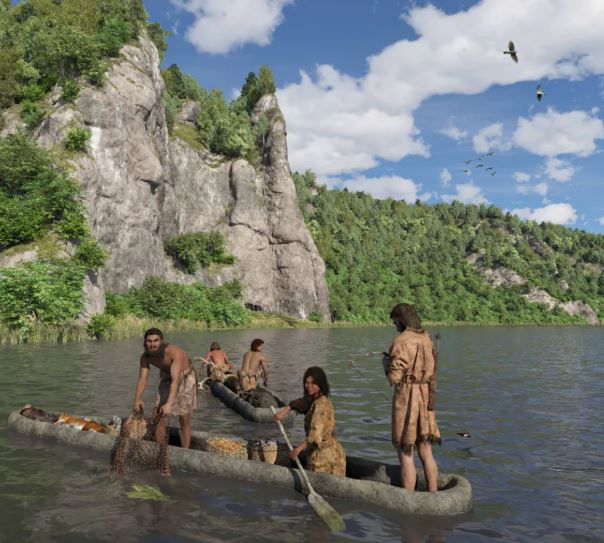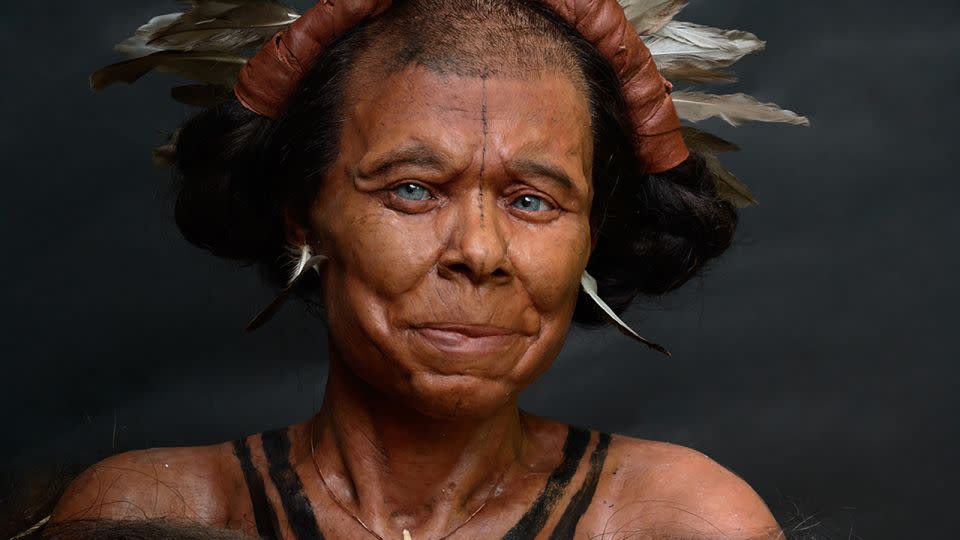The face of a woman who lived approximately 10,500 years ago in what is now Belgium, has been successfully reconstructed by a team of researchers offering new insight into the physical appearance and cultural practices of Mesolithic Europeans.
The scientists from Ghent University who led the team used ancient DNA analysis to reveal that the woman had blue eyes and lighter skin than most Mesolithic individuals previously studied in Western Europe. This contrasts with earlier reconstructions, such as that of Cheddar Man from the UK, who was believed to have darker skin.

“This discovery suggests greater genetic diversity among early European hunter-gatherers than previously assumed,” said Isabelle De Groote, an archaeologist at Ghent University and head of the Mesolithic Belgium research project. “She came from the same genetic population as Cheddar Man but had noticeably lighter skin.”
De Groote also noted distinct physical features identified from the skull. “She had a high nasal bridge, pronounced brow ridges, and was estimated to be between 35 and 60 years old at the time of her death.”
The woman’s remains were uncovered in the Margaux cave in Dinant during archaeological excavations in 1988–1989, alongside the skeletons of eight other women. The all-female burial site is considered unusual, as most Mesolithic graves include men, women, and children.
“Many of the skeletons were sprinkled with ochre, indicating ritual or symbolic behavior,” said De Groote. “Most were carefully covered with stone fragments, and one skull showed cut marks made after death, possibly suggesting ceremonial or ritual practices.”

The cave was used as a burial site over several centuries, pointing to its significance in Mesolithic society despite the nomadic lifestyle of the people.
“These were not just burial sites; they were places of memory. People returned to them over the generations,” De Groote added. “This reflects complex social structures and spiritual customs among early hunter-gatherer groups.”
Advancements in ancient DNA technology made the facial reconstruction possible, something that was not feasible when the remains were first excavated.
“This is a re-analysis of old excavations using cutting-edge techniques,” said Philippe Crombé, another archaeologist involved in the project. “We extracted high-quality DNA from her skull, which enabled a detailed and accurate facial reconstruction.”
The woman’s eye, hair, and skin color were determined from her DNA, while elements like tattoos, jewelry, and clothing were based on archaeological findings from other Mesolithic sites in the River Meuse basin, where similar communities once lived.
One site yielded tools, wild animal bones, and fish remains, indicating a nomadic lifestyle dependent on natural resources.
“They moved across the landscape following game, fishing spots, and foraging zones,” Crombé explained. “They were the last true hunter-gatherers of Western Europe.”
While the reconstruction provides a rare glimpse into the appearance and culture of a Mesolithic woman, many mysteries remain. The team is now examining the genetic relationships between individuals buried together and investigating how much of their diet consisted of fish and other aquatic resources.



